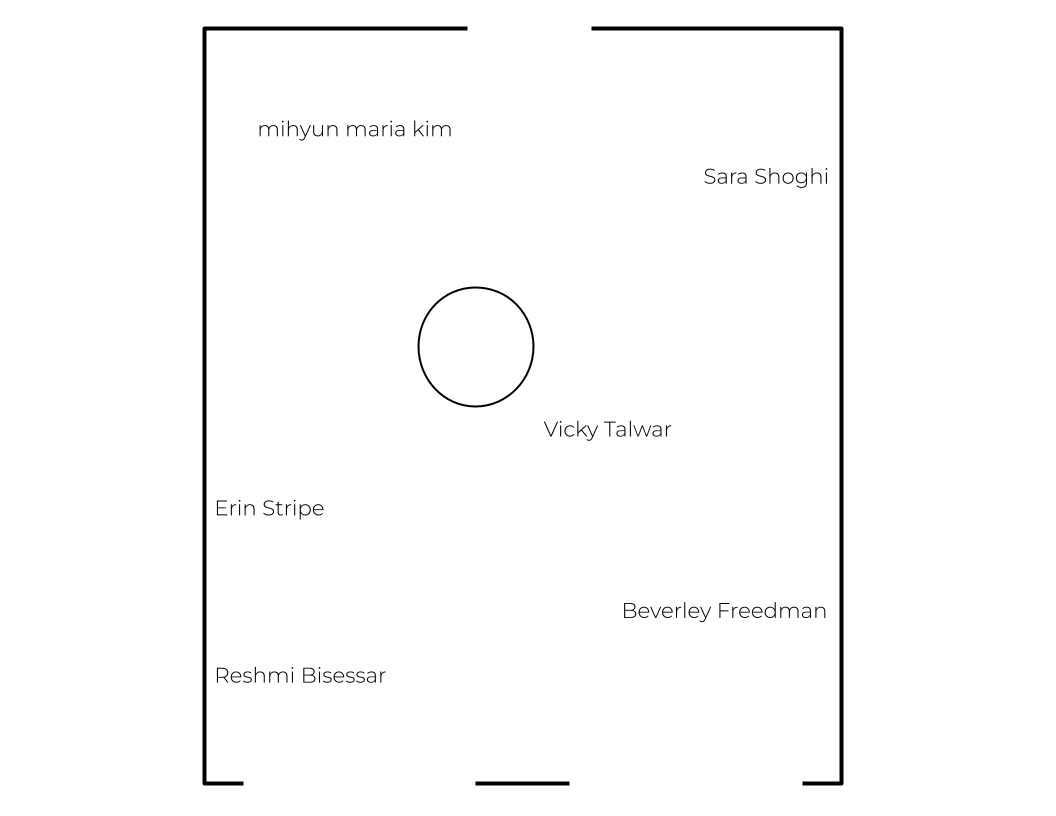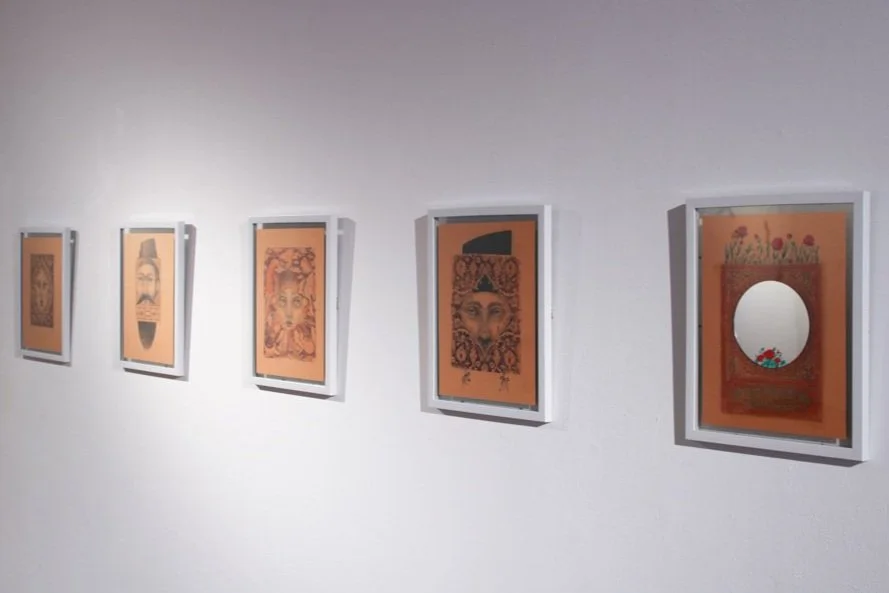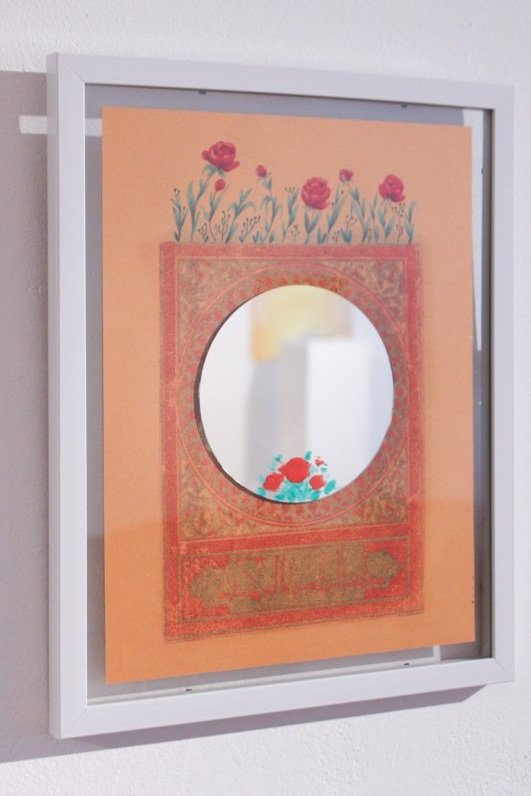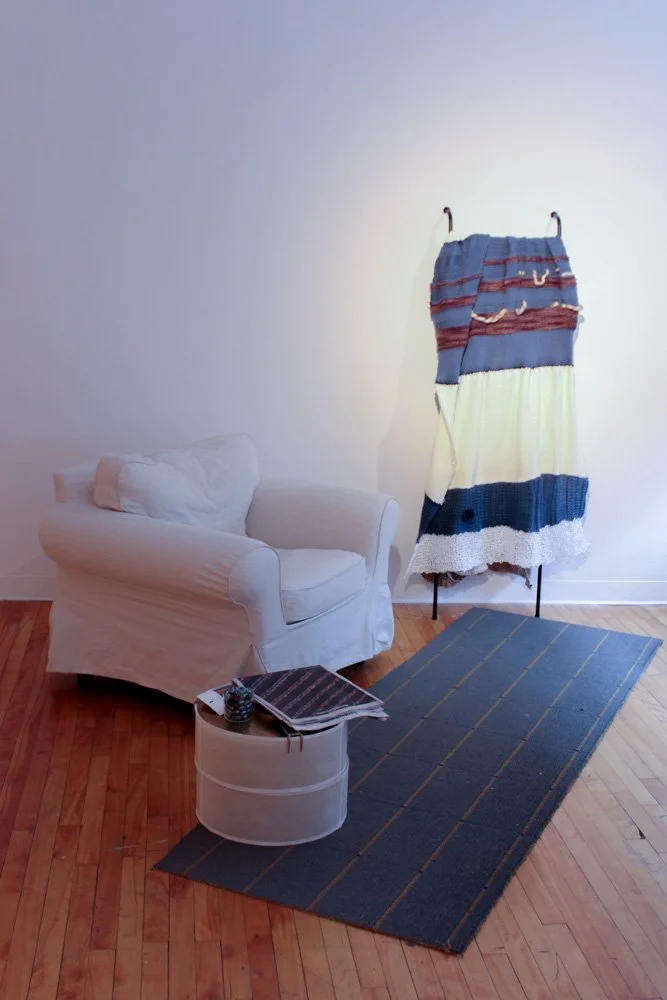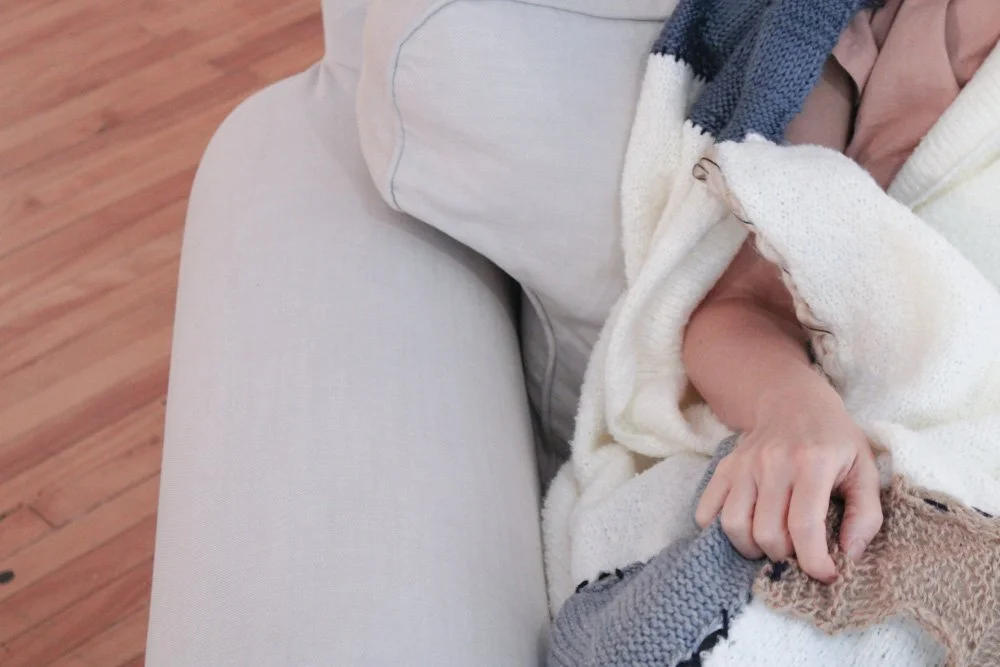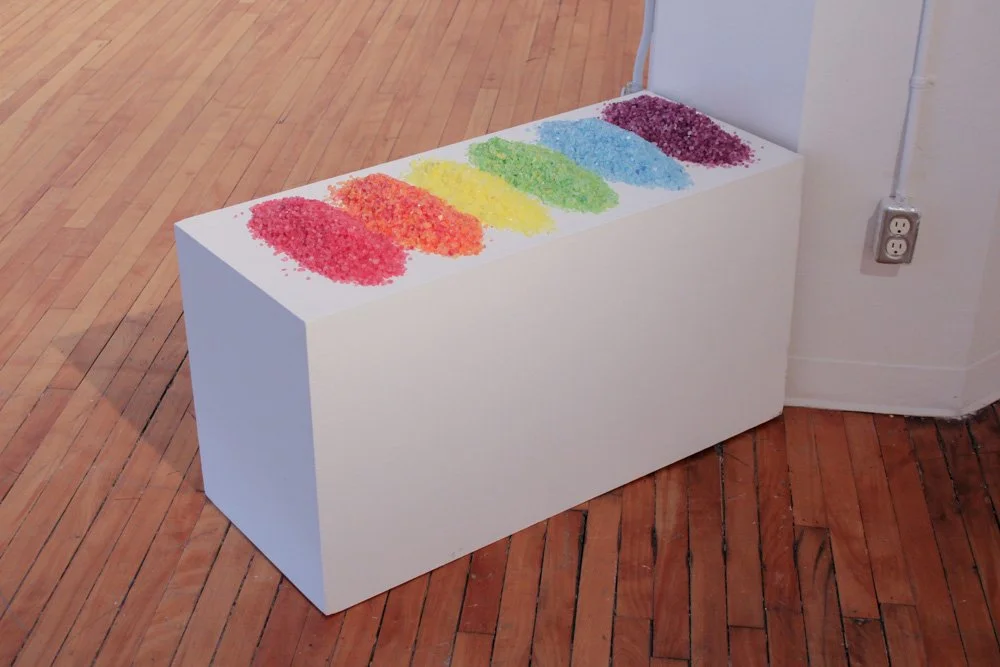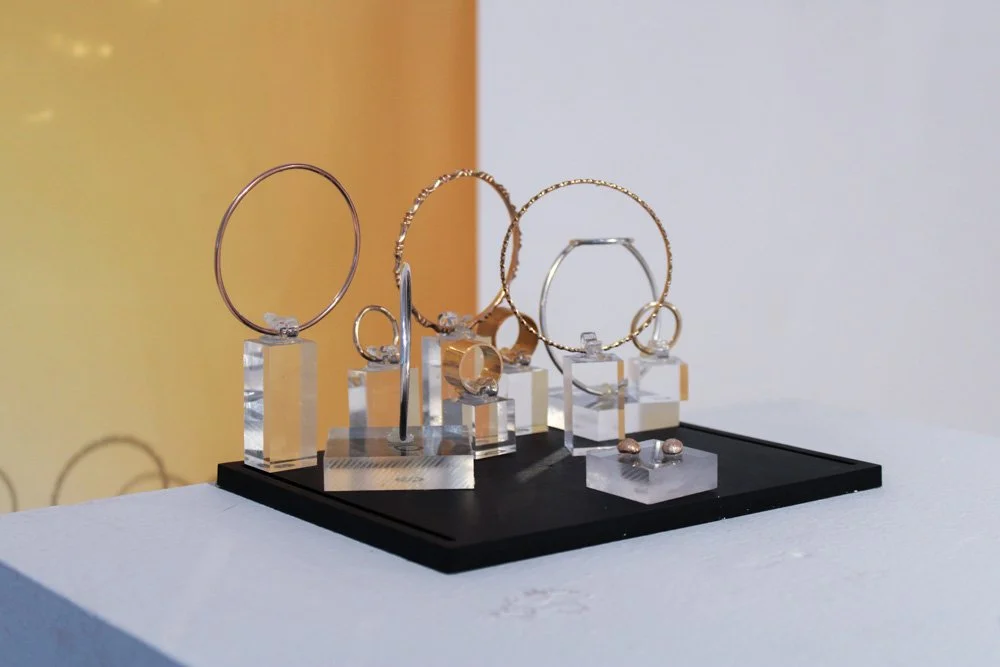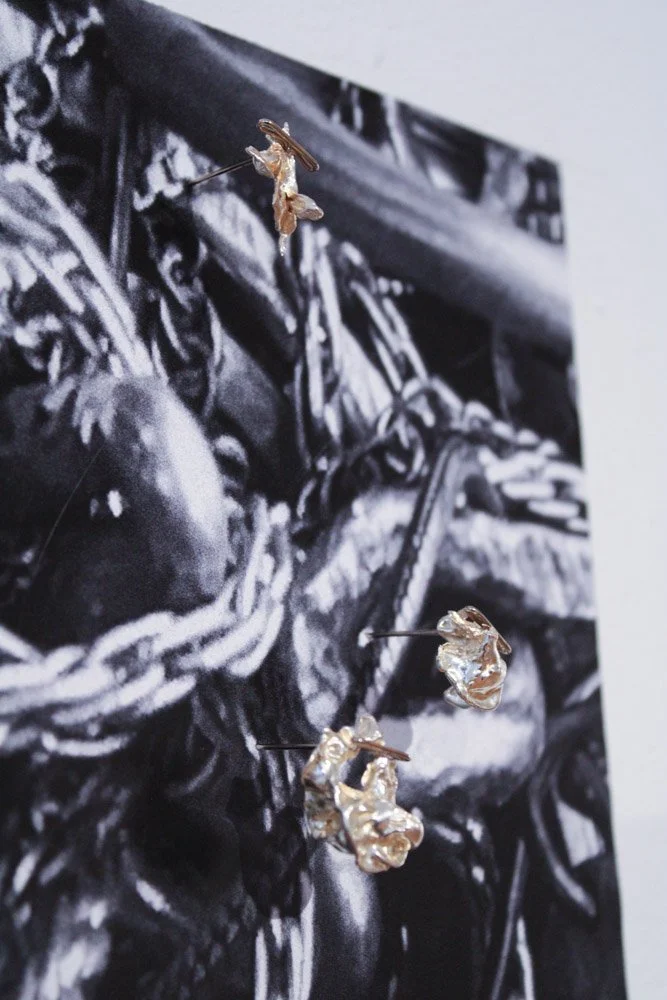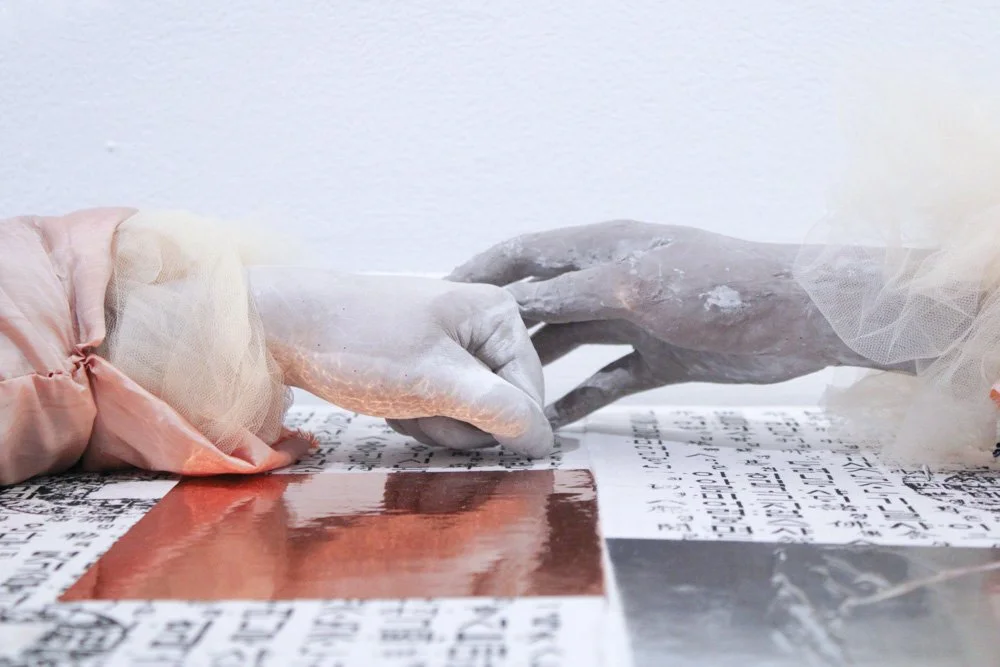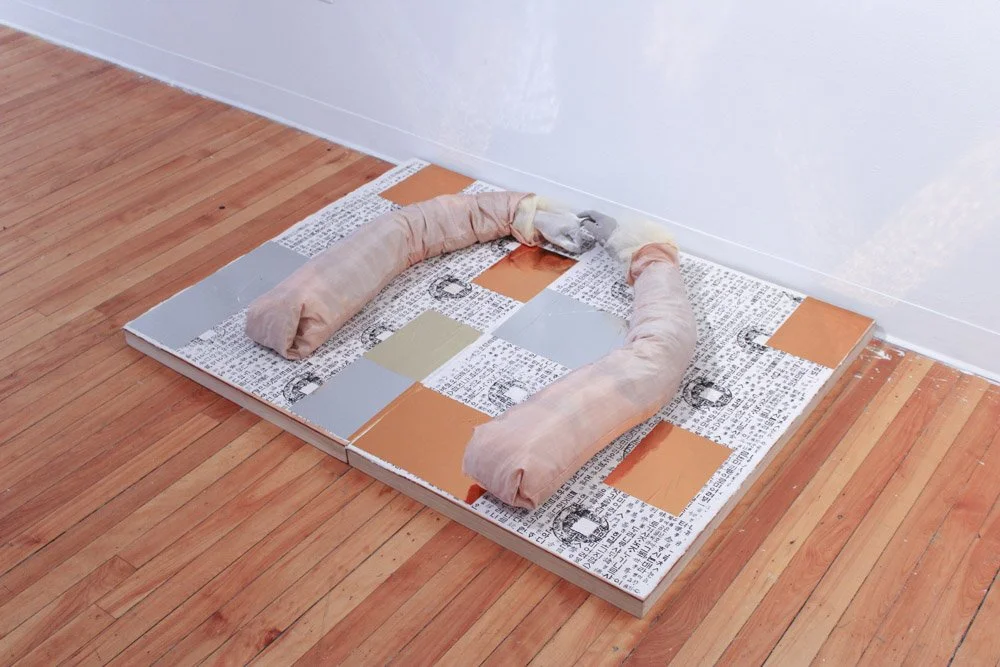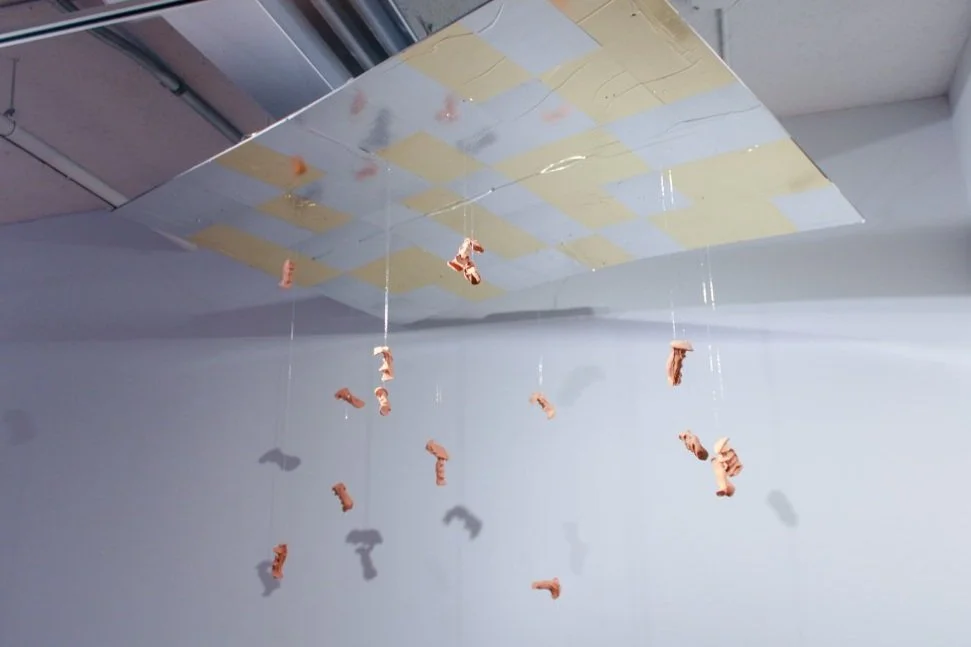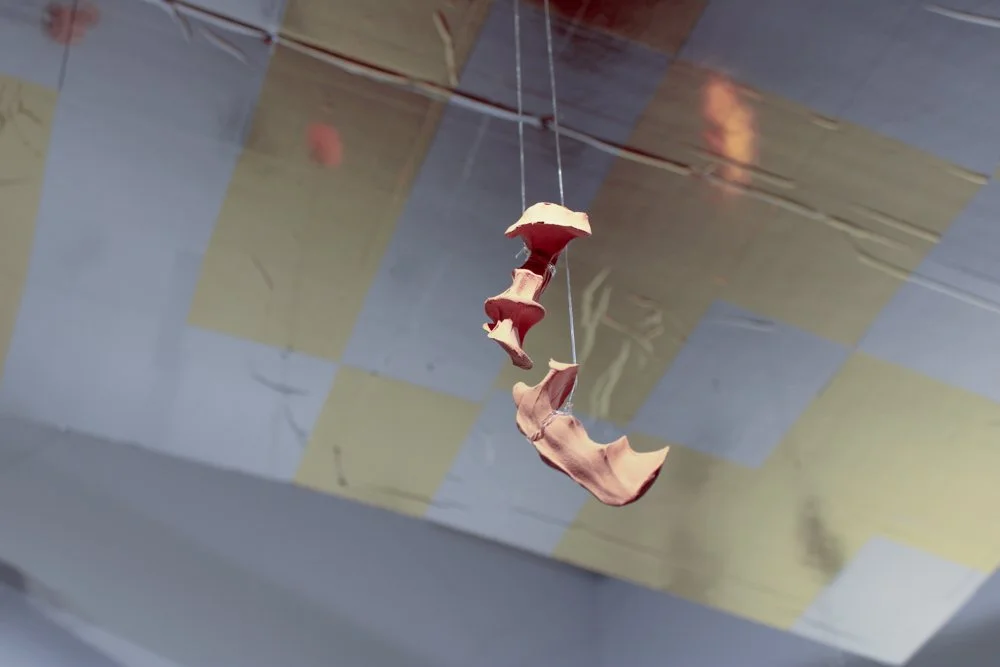October 7 - 16, 2022
Grad Gallery - 205 Richmond Street, Toronto Ontario
Process features new works by Beverley Freedman, Erin Stripe, mihyun maria kim, Reshmi Bisessar, Sara Shoghi, and Vicky Talwar, that were created as part of an ArtScape residency collaboration with OCAD U in Summer 2022. The artist’s works are representative of current themes and investigations occurring in their individual practices, but all respond to the idea of process. This notion of process speaks to the work of the artist in creating an artwork; conception, experimentation, revision, articulation, finalization. This work is generally confined to the studio and not welcomed into the gallery.
PROCESS aims to explore the potential for engagement that occurs when these elements are allowed to exist in an exhibited work and be presented in a gallery space. The works on view ask for viewer activation, and encourage play, rather than rely on passive viewing in their display.
Curated by Avalon Mott.
This is the first of two Thesis exhibitions exploring the relationship between artist, viewer, and gallery space. The second will be mounted at Xpace Cultural Centre in March 2023.
Sara Shoghi
Faces
Illustration on paper, mirror
2022
This series is an attempt to create a work that will be completed by the audience. The faces illustrated are of Persian men and women who have had their freedoms stripped and movements restricted, they are trapped in their tradition. As a result of the mirror in the work, the audience is forced to have themselves reflected amongst these oppressed people, which confronts the act of othering in observing and relating to their suffering.
Beverley Freedman
Marbles
Knit material, fabric, jute
2022
Marbles is an immersive piece that came about as a way to represent what it might be like to have dementia and the feeling of losing one’s self; to loose your marbles.
The blanket that characteristically represents warmth and comfort takes on a different meaning by including unusual material such as jute and synthetic raffia. The interwoven segments represent the altered pathways found in the brains of people with dementia, and the holes in the knitted pieces represent the areas in the brain where the neural connections have been lost. Marbles asks you to engage with the piece by wrapping yourself in it, and experience what it might be like to have dementia through material feeling.
Vicky Talwar
A Transfer of Energy
Rock Salt, Sound Energy Healing Treatment with Buddhist Monk Lama Jam and Sound Specialist Thomas Upjohn
2022
This piece was developed from a place of personal meditative practice, alongside Buddhist monk Lama Jam who performs Sound Energy Healing.
As a spiritual symbol in Hinduism and Buddhism, a mandala is used in meditation to assist in healing the maker as well as the viewer. The making of the mandala design is about the recognition of time, intention, and focus on inner self. In deconstructing this practice of making the madala into sound, materiality and color, the piece allows for an exploration of individual emotions and energy. The spirituality of the Tibetan medical singing bowls used to create the vibrational sounds improves the flow of energy in areas of the body. This flow of energy is said to contribute to connecting emotions within the sonic environment.
Reshmi Bisessar
Hues of Gold
Gold (various karats), vinyl printed photograph
2022
Hues of Gold is a deeply personal investigation of the history of gold rooted in a family linage. The piece aims to explore the tensions between traditional Guyanese goldsmithing designs, and modern aesthetic design.
Reinterpreting melted Guyanese gold led to questions around how we perceive ourselves and how others see us. What are we projecting when we wear the adornments of our ancestors in their original state? How has colonialism devalued what is traditional in favor of a western aesthetic? Through the melting and construction of the reimagined pieces, Hues of Gold brings into question what colonization has done to devalue gold as a commodity. Why does the convention of 9, 10, 12, 14, 15, 20, 22 and 23 karat gold Guyanese goldsmiths use have less perceived value than the 10, 18 and 24 karat gold used by western jewelers?
The forms presented are rudimentary in construction, however, from conception to execution the journey was an effort in making, reflection and examination of history. This process situates Hues of Gold back to a place that pulls in the direction of history and the current.
Erin Stripe
The Task is Transformation
Silver, vinyl printed photograph
2022
This work represents a reconnection with tools, materials, processes, and nuances of jewellery making—the joy of experimenting in a studio environment and exploring the malleability of silver.
This work contains the entirety of my thesis work melted into to practice.
This work depicts both journey and process from jewellery pieces, to the melting crucible, to wire, to ring. It attempts to invite the viewer into the transformative nature of the material that jewellers often experience.
Give it a try.
mihyun maria kim
Textures of Han
Hydrocal with graphite casts of artist hands, raw silk, handstitched stuffed with cut up old family garments, tulle, hanji (Korean mulberry paper), calligraphy ink, metallic sheets on ply and oak wood, installation size varies
Reach of Han
Ceramic casts of artist's performative grasps, acrylic string, metallic sheets, installation size varies
2022
“Han pumtta pultta (Han harboured and released)” is an autoethnographic reflexive and diffractive shaping of an untranslatable Korean psychosomatic affect, han—a “combination of bitterness, wistfulness, shame, melancholy, and vengefulness, accumulated from years of brutal colonialism, war, and U.S.-supported dictatorships that have never been politically redressed. Han is so ongoing that it can even be passed down: to be Korean is to feel han.” (Hong 2021). Through a practice of feeling, the gestures of pumtta and pultta of han are ritualized in the process of making and solidified into objects that are installed with mirrors, positioning the viewer into the space of translation between the layers of meaning-making.

